Key West Overview, Weather, and more
Start your journey here: Key West Travel Guide
Sightseeing Highlights of Key West
Highway US 1, Seven Mile Bridge
Read more here: Seven Mile Bridge, Highway 1 along the Florida Keys
Southernmost Point
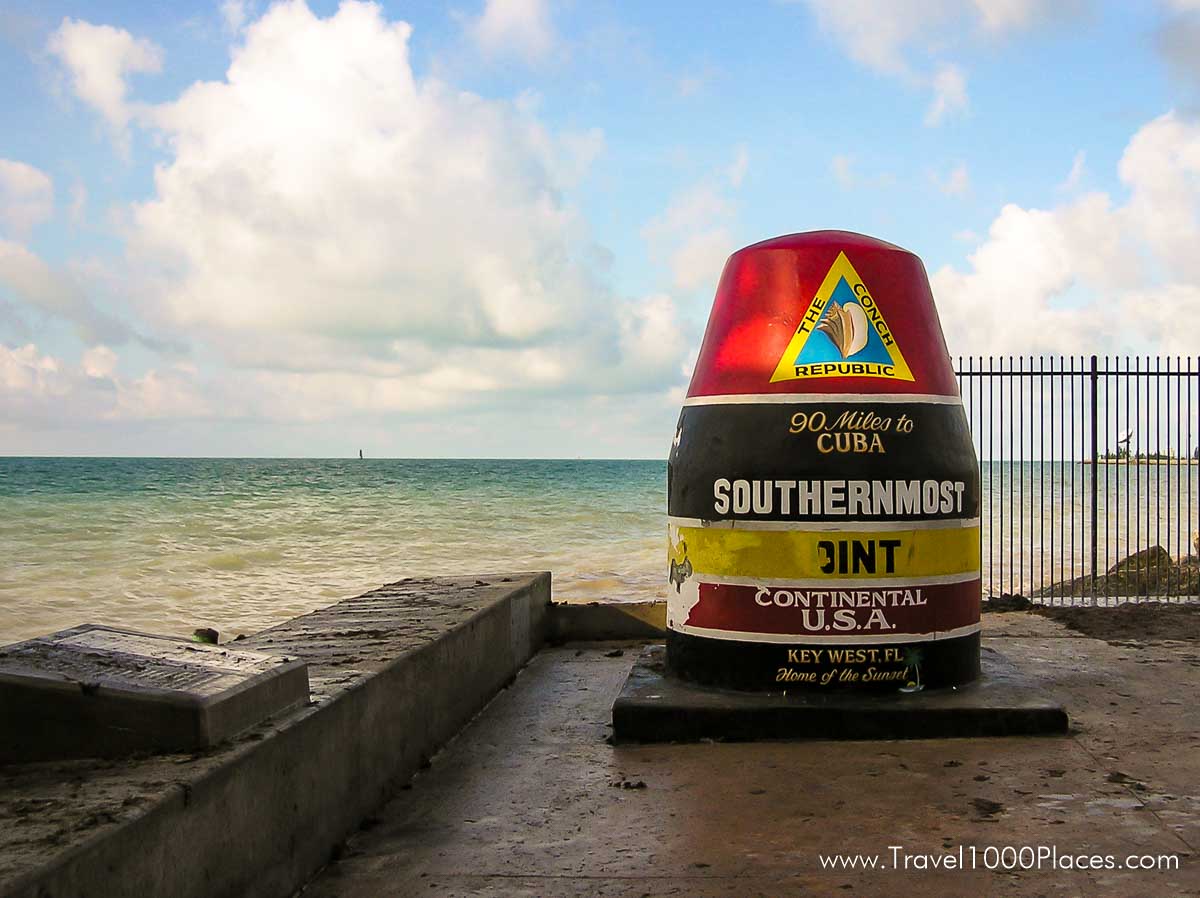
The symbol is well recognized among many people – it symbolizes the southernmost point in the U.S. – however, the geographical southernmost point is not here.
It stands right at the corner of South Street and Whitehead Street and the place is most time of the day pretty much crowded. Best light for photos is in the morning, because the sun is behind you.
From here it’s a short walk to the Hemingway House and the Lighthouse Museum.
Lighthouse Museum
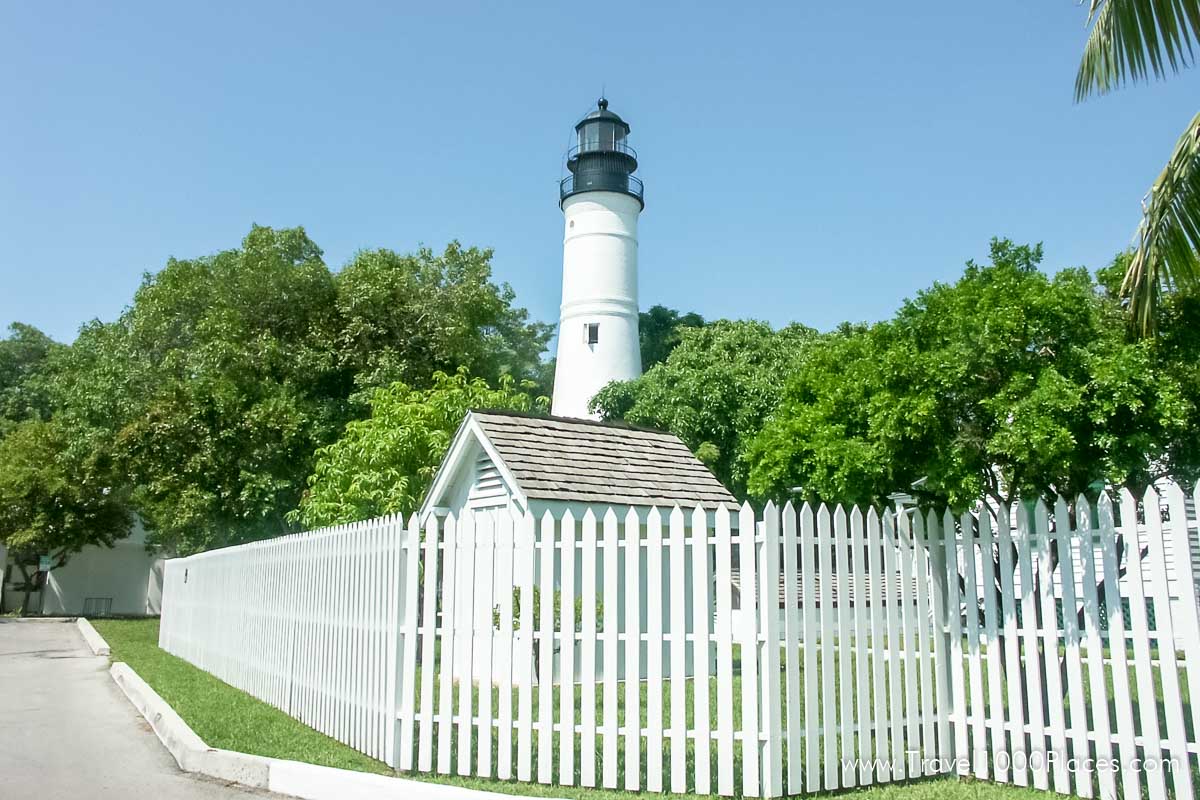
Adjacent of the Hemingway Home, at 938 Whitehead St., is the Key West Lighthouse Museum & Keeper’s Quarters. Completed in 1847, the lighthouse guided mariners through the treacherous Key West waters until it was decommissioned in 1969. Today both the light and the Keeper’s Quarters have been completely restored by the Key West Art & Historical Society to show visitors what life was like for a lighthouse keeper in the days before electricity and automation.
Visitors can climb an 88-step spiral staircase to the historic light’s watchroom for a panoramic view of Key West, step inside a 12-foot “first order” lens circa 1858, learn the stories of two courageous female lighthouse keepers and observe historic artifacts, photos and journals.
The Key West Lighthouse Museum is open daily from 9:30 a.m. to 4:30 p.m.
Web: https://www.kwahs.org/museums/lighthouse-keepers-quarters/visit
Hemingway House
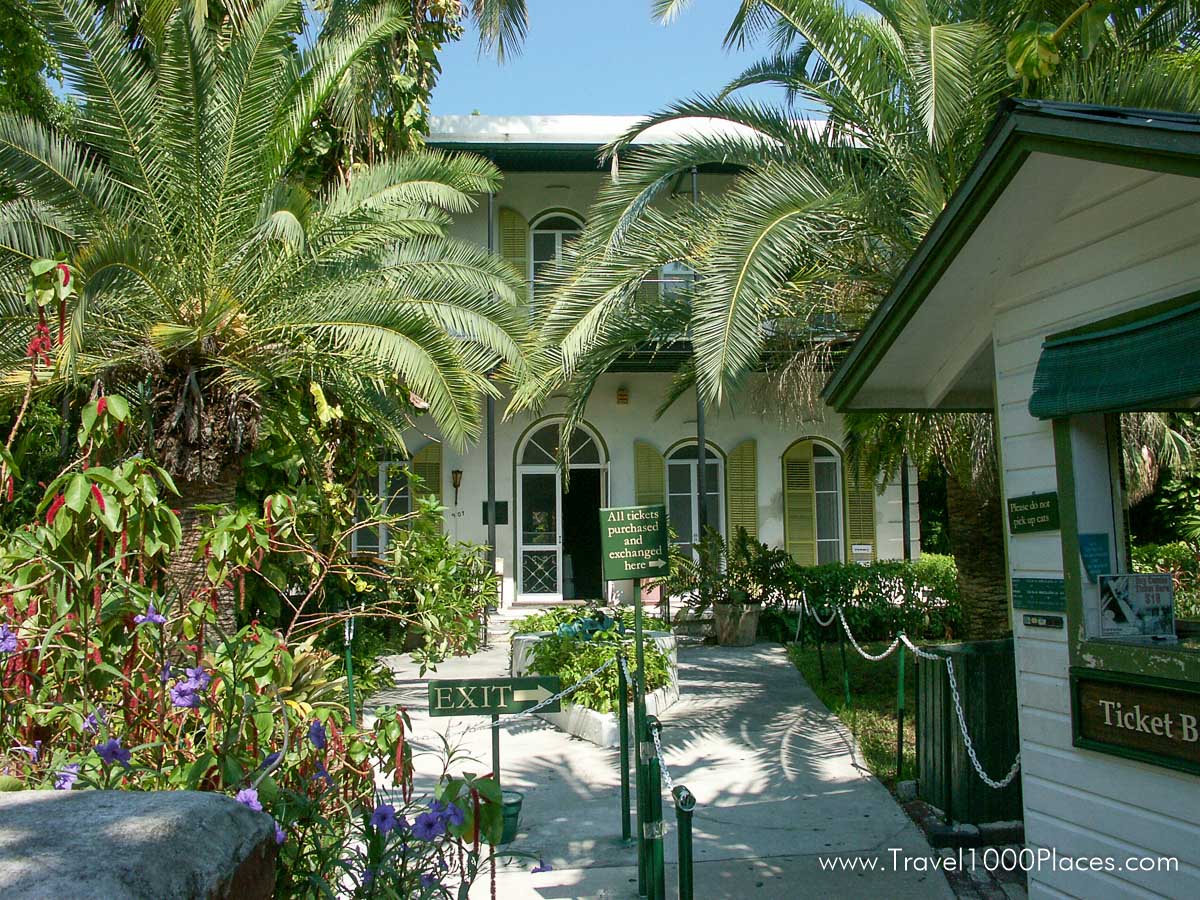
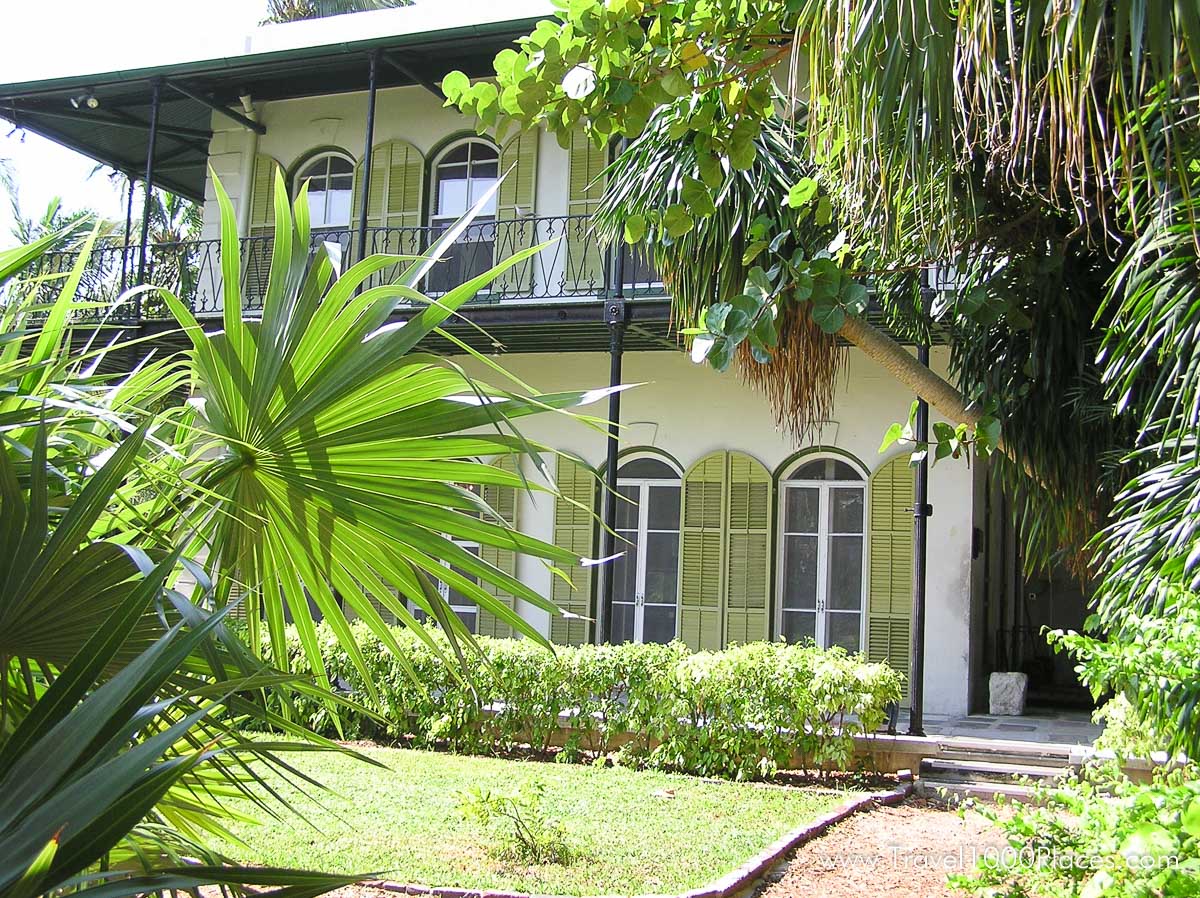
The house and gardens at 907 Whitehead St. are still “home” to one of the United States’ most renowned writers – the late Ernest Hemingway. Now a registered National Historic Landmark, the Spanish colonial villa is open to the public as a museum honoring the island’s most famous literary resident.
Winner of both the Nobel and Pulitzer prizes, the author lived on the property with his second wife Pauline and their two children from 1931 to 1940. He owned the home until his death in 1961.
Hemingway wrote many of his best-known works in the second-story writing studio adjoining the house. Among them were “Death in the Afternoon,” “For Whom the Bell Tolls,” “The Green Hills of Africa,” “The Fifth Column,” “The Snows of Kilimanjaro” and “To Have and Have Not,” which is set in Depression-era Key West. Following his death, the unpublished manuscript that was to become “Islands in the Stream” was found in a vault in the property’s garage.
Today, the home’s furnishings and atmosphere evoke the Hemingway era, as if the author were about to return from a fishing trip or a cocktail at his favorite watering hole.
Behind the house is the first swimming pool in Key West. Pauline had it built as a surprise for her husband, who was away covering the Spanish Civil War. When he learned that the pool cost $20,000, Hemingway took a penny from his pocket and angrily tossed it to the ground, saying she had spent his last cent. Pauline had the penny imbedded in the cement of the pool, where visitors can see it today.
Hemingway House Kitchen
Guided tours of the Hemingway Home are offered throughout the day. Visitors also can view the author’s writing studio and enjoy the grounds for as long as they like. Many spend time making friends with the multitude of six-toed cats that roam the grounds – descended, so the story goes, from a feline given to Hemingway by a sea captain.
Web: https://www.hemingwayhome.com/
Truman Little White House
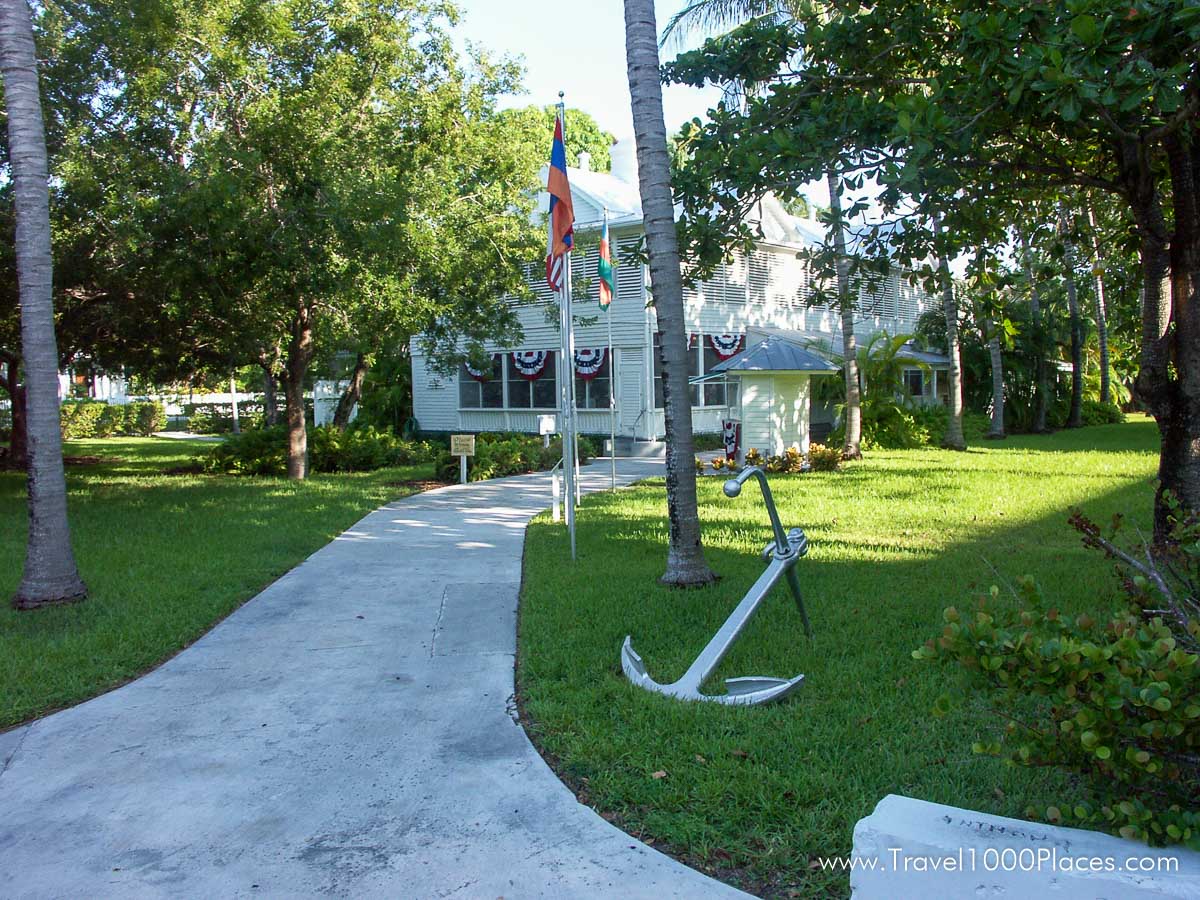
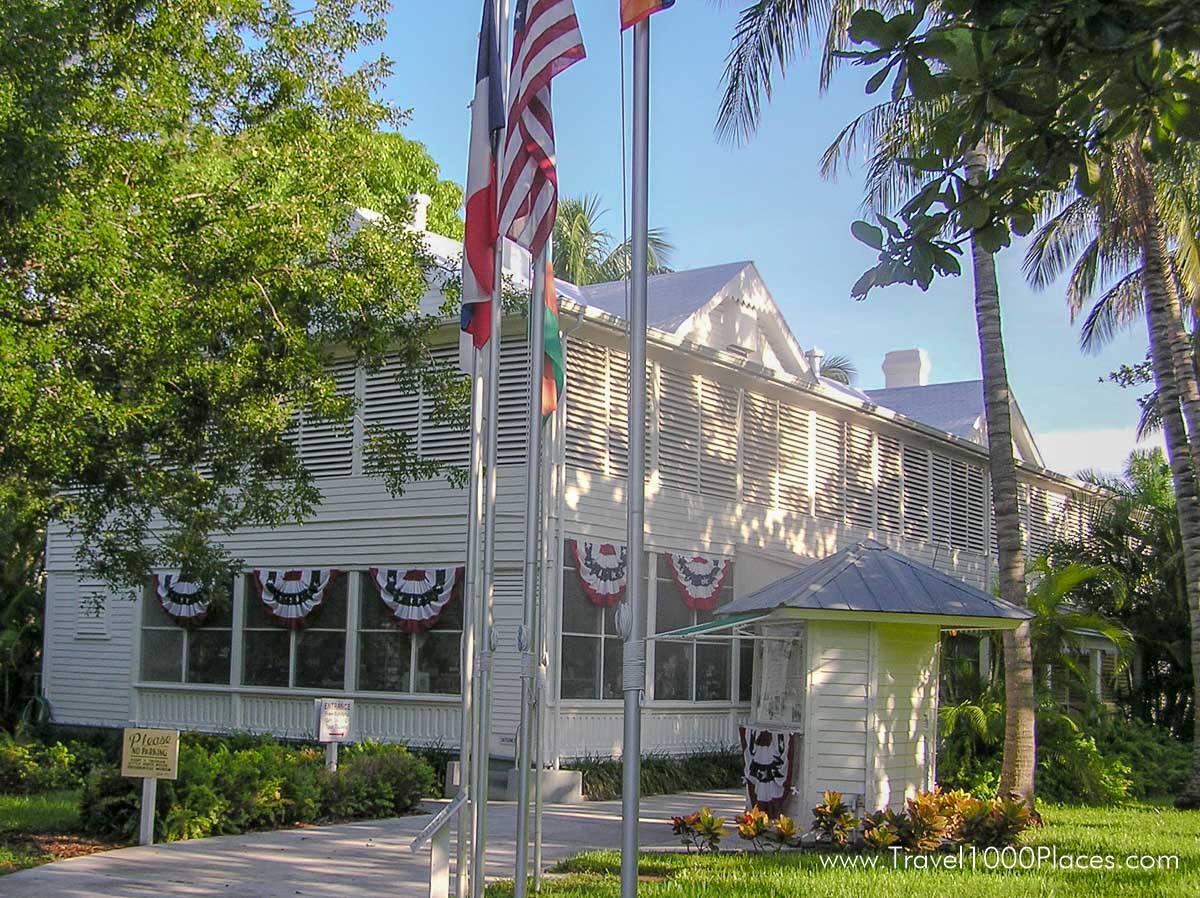
The Truman era in Key West is showcased at the Harry S Truman Little White House Museum, 111 Front St. on Truman Annex. Truman, who visited Key West 10 times during his presidency, liked the island so much that he once wrote his wife, “I’ve a notion to move the capital to Key West and just stay.” The Navy base’s commandant’s quarters, a 10-room West Indian structure, became his Little White House.
Today, docents guide visitors through the meticulously restored residence, which looks much as it did in Truman’s day. Items on display include the original piano and poker table – both used frequently by the former president. The house has also hosted former presidents Dwight Eisenhower, John Kennedy and Jimmy Carter.
Web: https://www.trumanlittlewhitehouse.com/
Mallory Square
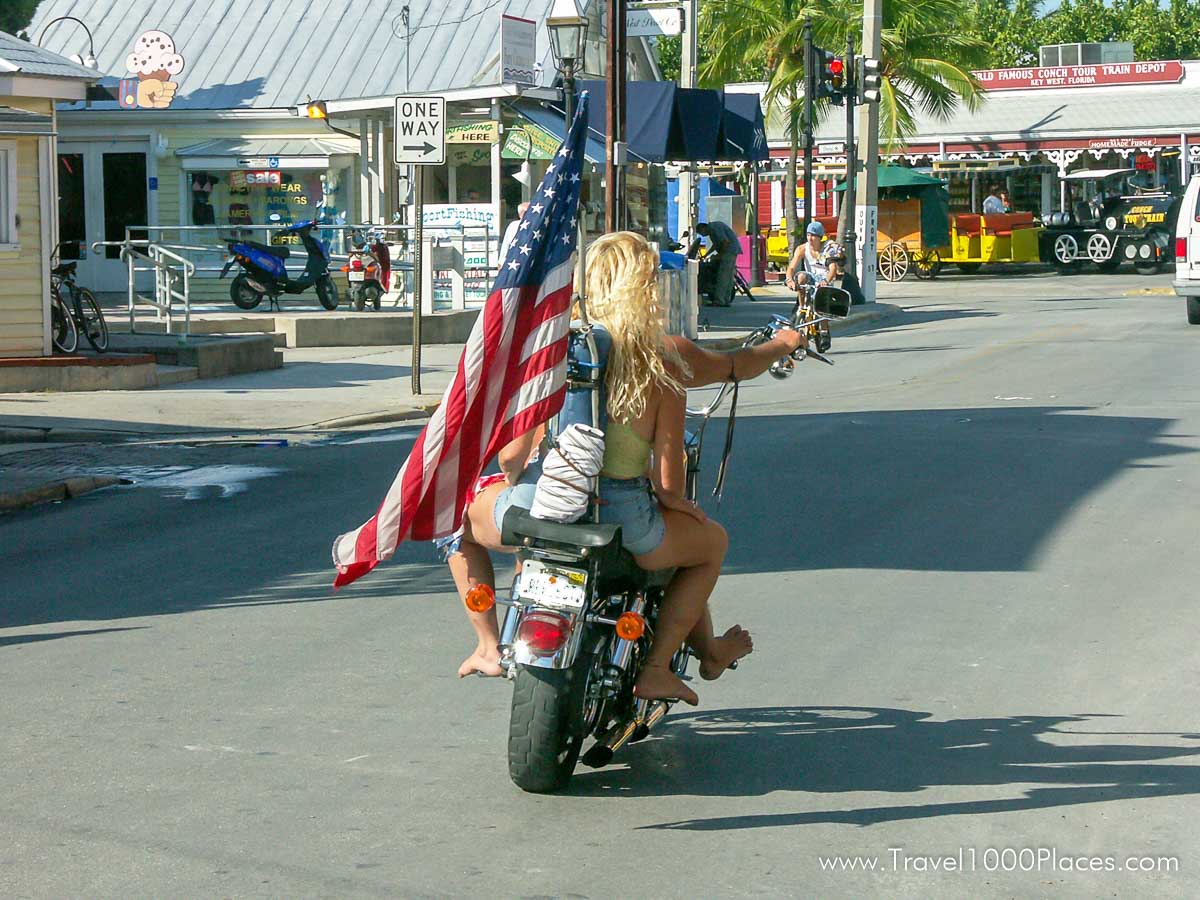
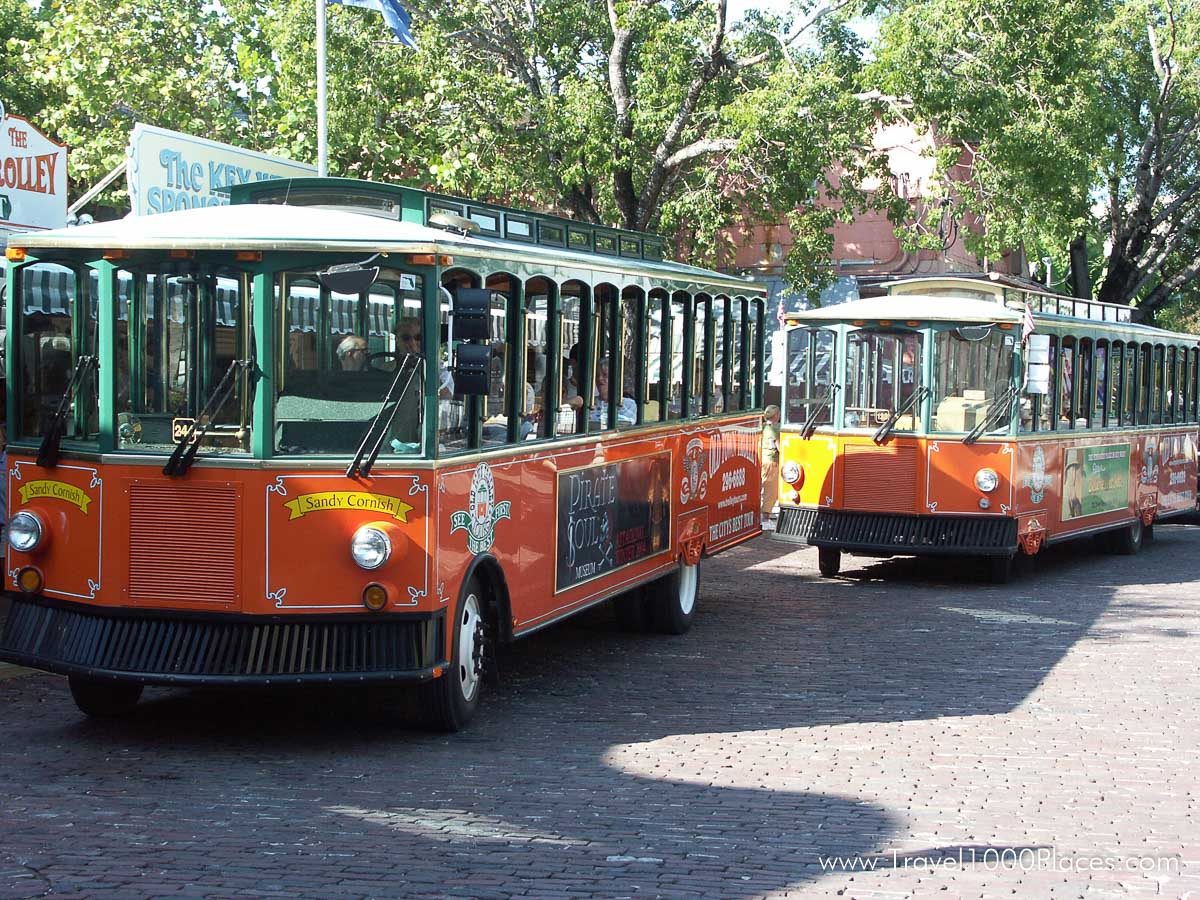
Mallory Square, Mallory Pier. Street performers take center stage here each evening as visitors flock to Key West’s internationally renowned sunset celebration.
The Conch Tour Train, 501 Front St., and Old Town Trolley Tours, Mallory Square. Both tour operations offer guided and informative expeditions throughout Key West, departing every half hour.
Duval Street
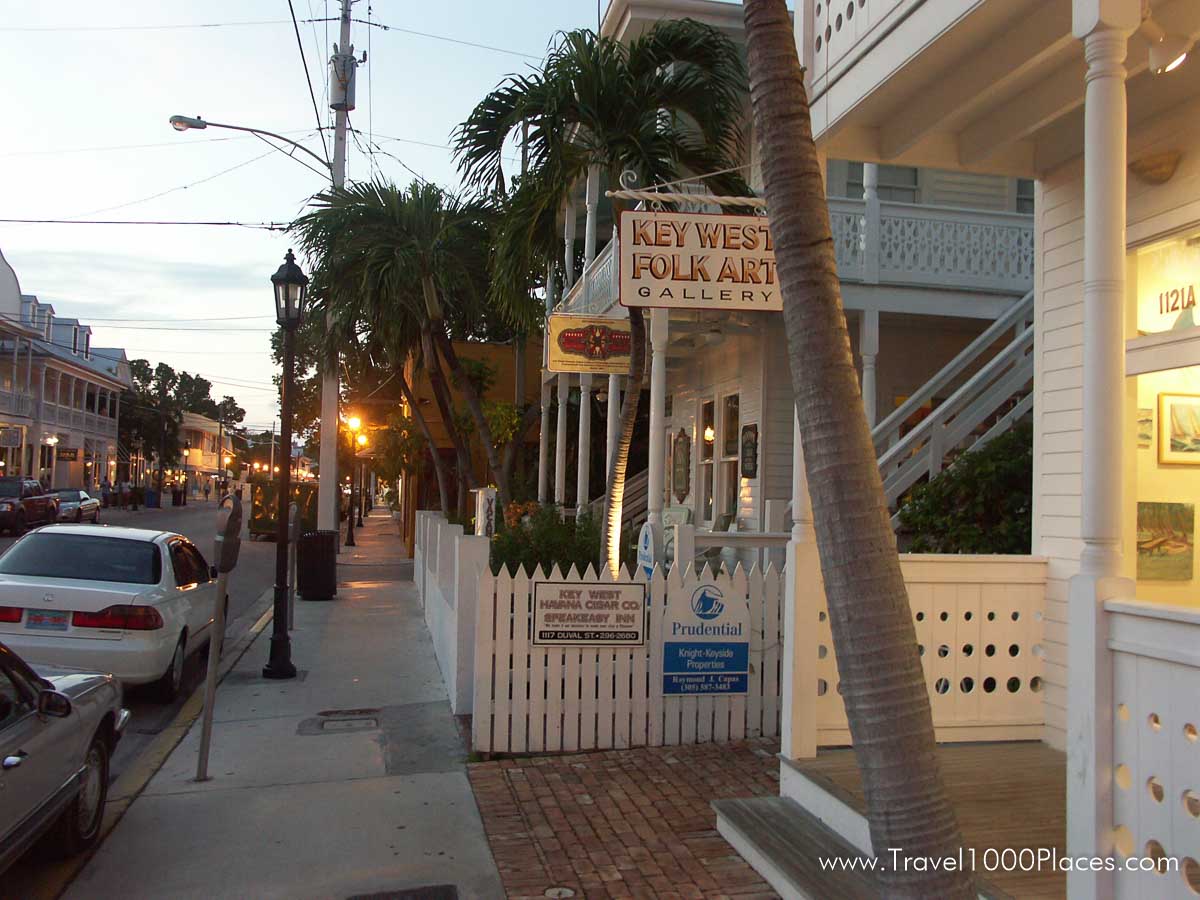
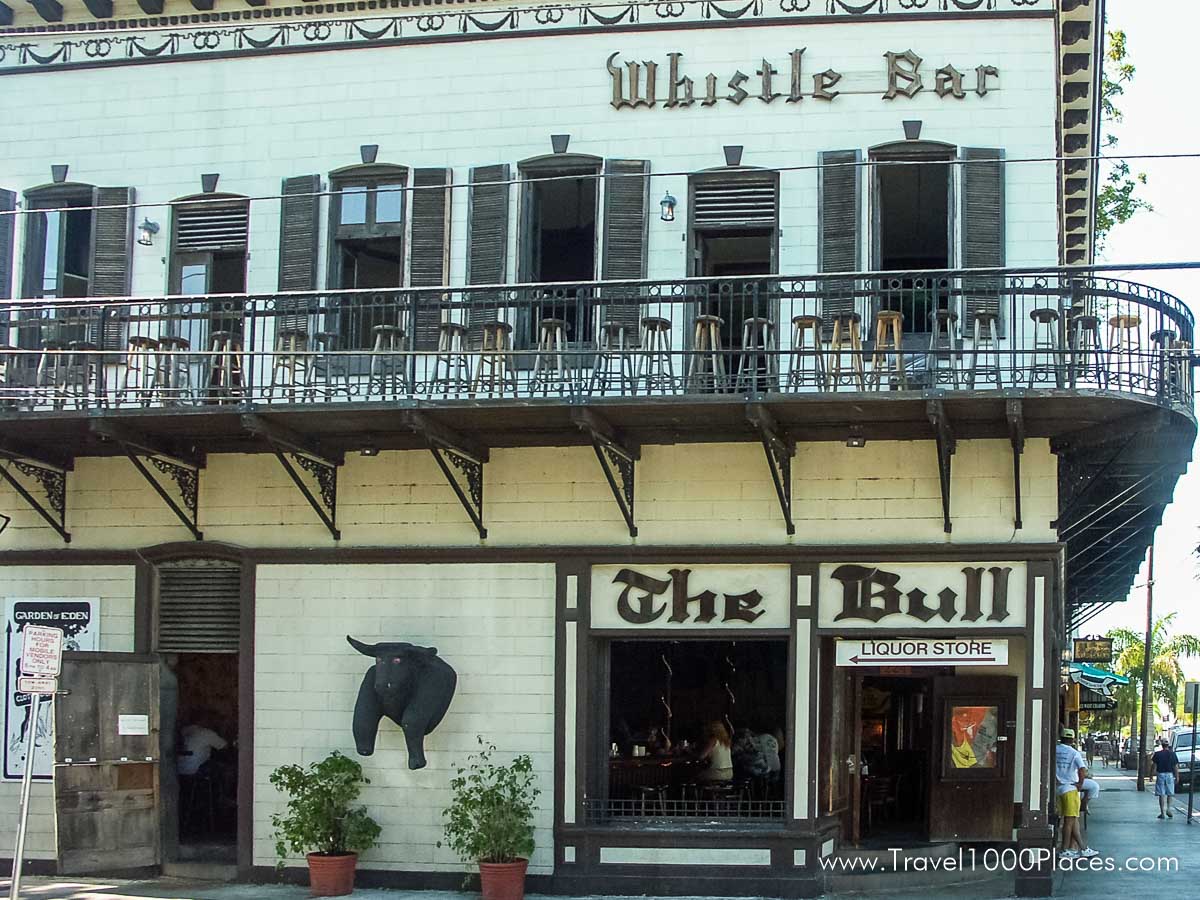
Duval Street offers abundant possibilities to shop and to drink – Sloppy Joe’s Bar is perhaps the most famous one on the stretch since it was Ernest Hemingway’s favorite bar where he spent much of his time and money. By the way, Hemingway once took one of the bar’s urinals home with him and built with it the trough at the base of the cat drinking fountain.
“Sloppy Joe” Russel’s bar opened officially on December 5, 1933, when the prohibition was repealed.
Sloppy Joe’s Bar
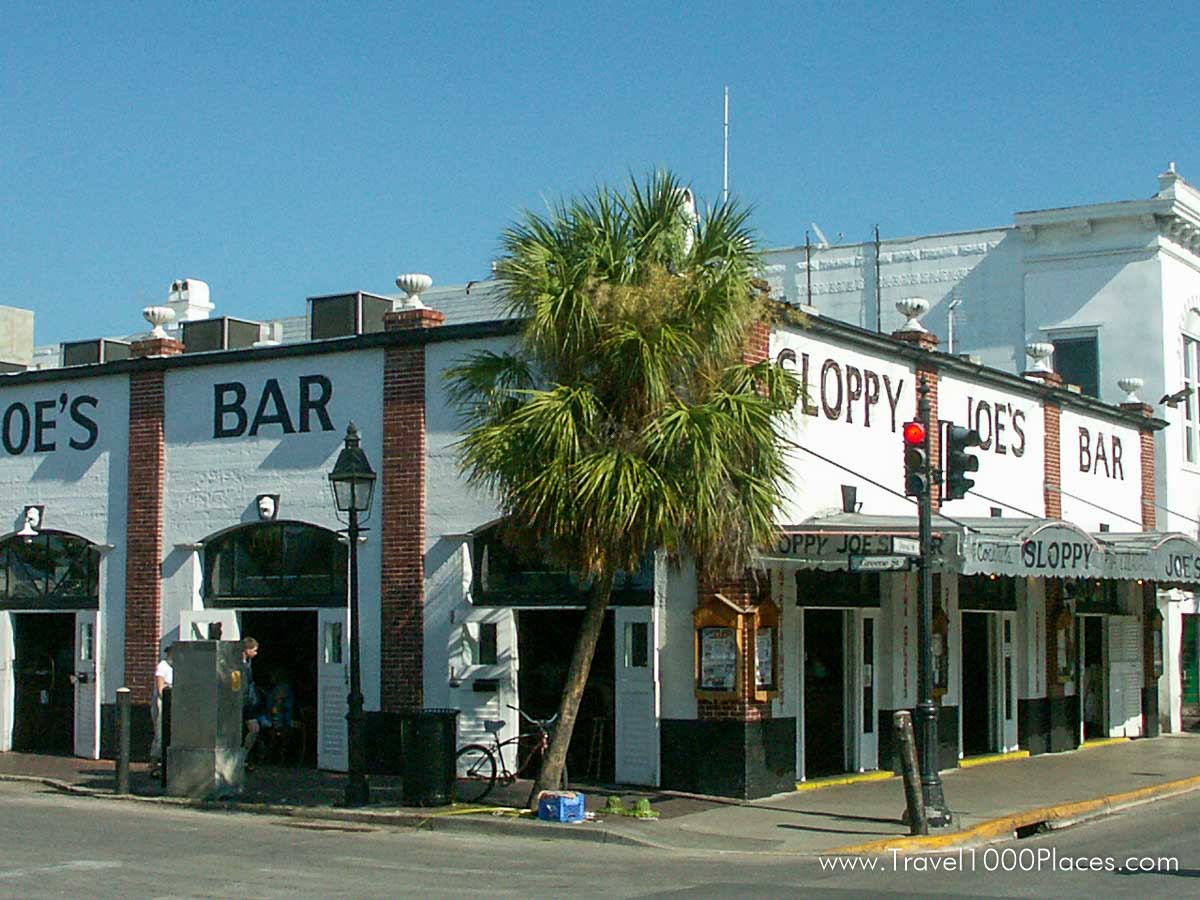
Duval Street begins just a 100 yards away from the Southernmost Point and runs northwest to to Mallory Square which is a little more than one mile.
Historic Seaport at Key West
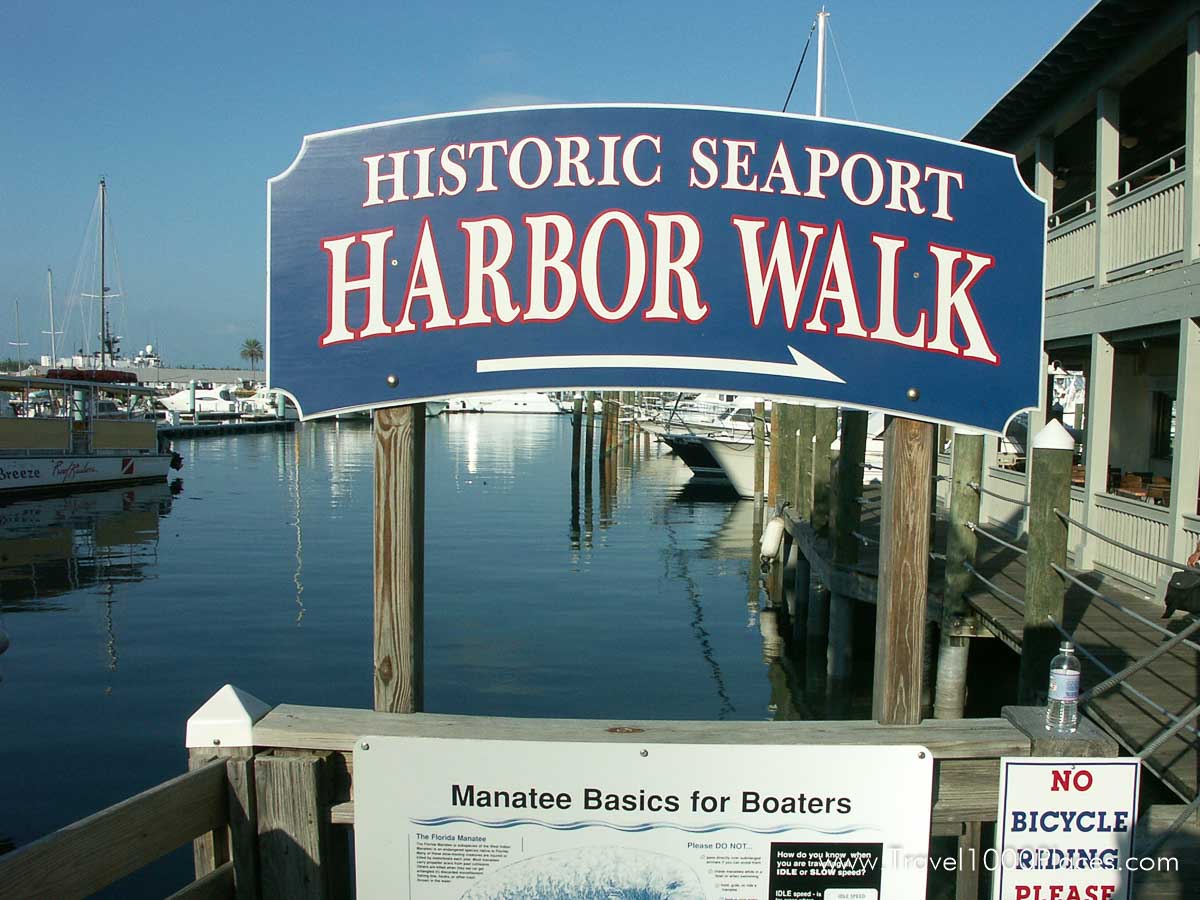
Bight, from Greene to Grinnell streets at the north end of the island. Along a half-mile harbor walk are shops, restaurants, bars and a 156-slip working marina that is home to tall ships, ferries and catamarans which provide dive, snorkel and sunset cruises.
Harbor Walk
At Schooner Wharf which is at the end of the Harbor Walk you’ll discover Schooner America, the fastest schooner in the world as it’s said. Once it won the America’s Cup and offers now 2 hour cruises. Especially the sunset cruise is worth to be considered as something you should do.
Key West Cemetery
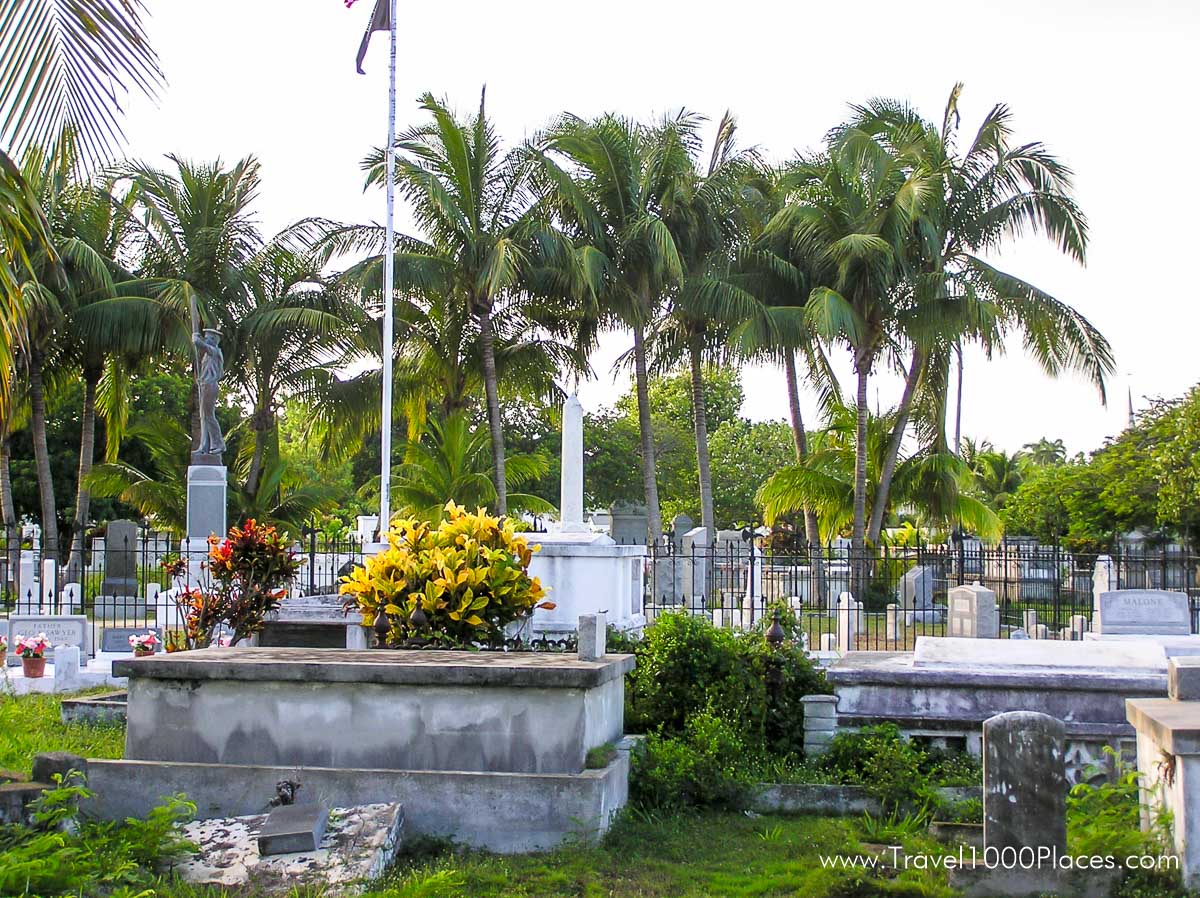
The phrase, etched in stone, is simple and to the point: “I Told You I Was Sick.” Passersby do a double take, read the line again, and find themselves nodding and laughing, in of all places, a cemetery. Not just any cemetery, of course, but the Key West Cemetery, which – like the native inhabitants of this tiny, subtropical island – is unique. “I Told You I Was Sick” was one Key West soul’s final expression of humor, immortalized on her gravestone. Key West’s cemetery fills nearly 20 prime acres in the heart of the island’s historic district. It is old and picturesque, a photographer’s dream, with stone-encased caskets resting on top of the earth in addition to more traditional below-ground graves. It’s historic, too. At a special memorial in the cemetery rest the remains of U.S. sailors who died when the battleship Maine exploded and sank in Havana Harbor in 1898, touching off the Spanish-American War. There’s also a plot dedicated to those who died in the Ten Years’ War, fought from 1868 to 1878 in an unsuccessful attempt to liberate Cuba from Spanish rule. The memorial, which contains a single grave, was established in the mid-1890s by Cuban patriots living in Key West. Fans of Ernest Hemingway, the Nobel Prize-winning author who lived in Key West throughout the 1930s, have a special reason to visit the cemetery. Along its tree-shaded lanes they’ll find the grave of the author’s longtime friend and fishing companion, “Sloppy Joe” Russell, and that of his sparring partner Kermit “Shine” Forbes, a resident of the island city’s Bahama Village until his recent death. The cemetery’s individualistic and sometimes insouciant character is reflected in the inscriptions on many of the graves. For example, the tomb of E. Lariz, who passed away in 1986, reads “Devoted Fan of Singer Julio Iglesias.” Another intriguing burial place is that of Thomas Romer, a Bahamian veteran of the War of 1812, whose grave marker reports that he was a “good citizen for 65 of his 108 years.” Humans are not the only ones buried in the historic cemetery. A well-maintained brick lot features the graves of three Yorkshire terriers – one bearing the inscription “His Beautiful Little Spirit Was a Challenge to Love.” The plot also contains the final resting-place of Elfina, a pet deer.
Dry Tortugas National Park & Fort Jefferson
![Fort Jefferson, Dry-Tortugas [photo: NPS / Glenn-Gardner]](https://www.travel1000places.com/wp-content/uploads/2020/06/nps-Dry-Tortugas-cr-NPS-Glenn-Gardner.jpg)
![Dry Tortugas Camping on Garden Key [photo: NPS]](https://www.travel1000places.com/wp-content/uploads/2020/06/nps-Dry-Tortugas-Camping-Garden-Key-cr-NPS.jpg)
Along with the surrounding shoals and waters, they make up Dry Tortugas National Park. The area is known for its famous bird and marine life, and its legends of pirates and sunken gold. Fort Jefferson, one of the largest coastal forts ever built, is a central feature. The Tortugas were first discovered by Ponce de Leon in 1513. Abundant sea turtles or “tortugas” provisioned his ships with fresh meat, but there was no fresh water-the tortugas were dry. Since the days of Spanish exploration, the reefs and shoals of the Dry Tortugas have been a serious hazard to navigation and the site of hundreds of shipwrecks.
U.S. military attention was drawn to the keys in the early 1800’s due to their strategic location in the Florida Straits. Plans were made for a massive fortress and construction began in 1846, but the fort was never completed. The invention of the rifled cannon made it obsolete. As the military value of Fort Jefferson waned, its pristine reefs, abundant sea life and impressive numbers of birds grew in value. In 1935, President Franklin Roosevelt set aside Fort Jefferson and the surrounding waters as a national monument. The area was re-designated as Dry Tortugas National Park in 1992 to protect both the historical and natural features.
Getting Around
Upon arrival, see the orientation program at the visitor center in Fort Jefferson and take the self-guiding tour of the fort.
A boat is necessary to visit areas of the park other than Garden Key/Fort Jefferson.
Camping on Dry Tortugas
All info here: https://www.nps.gov/drto/planyourvisit/campgrounds.htm
Official Park Website (NPS): https://www.nps.gov/drto/
Other interesting Sightseeing in Key West…
Key West Aquarium
The Key West Aquarium, 1 Whitehead Street. Showcasing the diverse marine life that inhabit the waters of Key West, the aquarium offers guided tours, a touch tank and daily fish feedings.
Web: https://www.keywestaquarium.com/
Key West Butterfly & Nature Conservatory
The Key West Butterfly & Nature Conservatory, 1316 Duval Street. One of only three major butterfly facilities in Florida, the conservatory features a 5,000-square-foot glass-domed tropical butterfly habitat. Visitors can observe between 750 and 1,200 butterflies from 30 to 50 species in the habitat, as well as learn about butterflies’ role in the natural world and watching them hatch in a special metamorphosis chamber.
Web: https://www.keywestbutterfly.com/
Audubon House & Tropical Gardens
Audubon House & Tropical Gardens, 205 Whitehead Street. This restored historic home contains original Audubon engravings from 1832, when the artist and ornithologist visited Key West and sketched 18 new species for his “Birds of America” folio.
Bahama Village
Bahama Village, Petronia Street. Revitalized neighborhood showcasing Key West’s Caribbean heritage through a Bahamian marketplace, shops, ethnic restaurants and galleries.
Curry Mansion
Curry Mansion, 511 Caroline Street. An elaborate Victorian structure built on the site of the homestead of Florida’s first millionaire. Curry Mansion now serves as a historic house museum showcasing an era of elegance. An inn is situated on the property; the structure is on the National Register of Historic Places.
East Martello Museum & Gallery
East Martello Museum & Gallery, 3501 South Roosevelt Blvd.. This historic military fort is filled with unique artifacts and memorabilia, along with the works of renowned local artists Mario Sanchez and Stanley Papio.
web: https://www.kwahs.org/museums/fort-east-martello/visit
Flagler Station Over-Sea Railway Historeum
Flagler Station Over-Sea Railway Historeum, 901 Caroline Street. Artifacts, historic film footage and still photographs commemorate Henry Flagler’s construction of “the railroad that went to sea.” An engineering marvel completed in 1912, the railroad connected Key West with the mainland for the first time.
Fort Zachary Taylor State Historic Site
Fort Zachary Taylor State Historic Site, Enter through Truman Annex on Southard Street. Constructed between 1845 and 1866, this fort remained in Union hands throughout the Civil War and was later used during the Spanish-American War. The fort’s collection of Civil War cannons is the largest in America.
Web: https://www.floridastateparks.org/parks-and-trails/fort-zachary-taylor-historic-state-park
Key West Museum of Art & History
The Key West Museum of Art & History, 281 Front St. near Mallory Square. Operated by the Key West Art & Historical Society, the museum showcases regional, national and international fine art and historical collections and is a vital repository of artifacts related to the history and culture of the Florida Keys. The museum is located in Key West’s restored Custom House building.
Lofton B. Sands African-Bahamian Museum and Resource Center
Lofton B. Sands African-Bahamian Museum and Resource Center, 324 Truman Ave. Located in Key West’s historic Bahama Village, this museum spotlights the island’s African-Bahamian history through a rich collection of photographs, correspondence, vintage clothing and memorabilia.
Mel Fisher Maritime Museum
Mel Fisher Maritime Museum, 200 Greene Street. This museum showcases the richest single collection of 17th-century maritime and shipwreck antiquities in the Western Hemisphere – including the treasure of the Nuestra Señora de Atocha.
Web: https://www.melfisher.org/
Nancy Forrester’s Secret Garden
Nancy Forrester’s Secret Garden, 1 Free School Lane. Self-guided tours are offered through this lush rainforest habitat. Palms, orchids, rare and indigenous plants, and exotic tropical birds are among the attractions.
San Carlos Institute
The San Carlos Institute, 516 Duval Street. Founded in 1871 to preserve Cuban culture and promote the freedom of Cuba, the San Carlos functioned as a school and cultural center. In a historic 1892 speech from the building’s balcony, Cuban patriot Jose Marti united the Cuban exile community and launched his drive for Cuba’s independence. Today the museum is an affiliate of the Smithsonian Institution, with a library, art gallery, theater and school classes centering around Cuban history and the Spanish language.
Southernmost House
The Southernmost House, 1400 Duval Street. Built in 1896 overlooking the Atlantic Ocean, the house epitomizes the grandeur of the island city’s historic heyday. The public rooms feature an extraordinary array of political and literary memorabilia – including letters handwritten by Ernest Hemingway – collected by the house’s owner.
Turtle Kraals Museum
Turtle Kraals Museum, 200 Margaret Street. People can learn about turtles and their preservation, and Key West’s turtling industry, at this unique museum in the island city’s Historic Seaport. Visitors also can view a display of turtle shells and sea turtle products, and learn about the modern-day perils turtles face.
Oldest House / Wrecker’s Museum
The Oldest House/Wrecker’s Museum, 322 Duval Street. Said to be the oldest structure in Key West, this 1829 home – formerly inhabited by Captain Francis Watlington and his nine daughters – is furnished with artifacts and antiques recalling Key West’s rich wrecking heritage. Included among them are the official rules of the wrecking industry and a wreckers’ black list.
Key West’s wrecking industry comes alive at the Key West Shipwreck Historeum, 1 Whitehead St. The museum combines actors, films, laser technology and actual artifacts from the shipwrecked “Isaac Allerton,” which sank in Keys waters in 1856.

